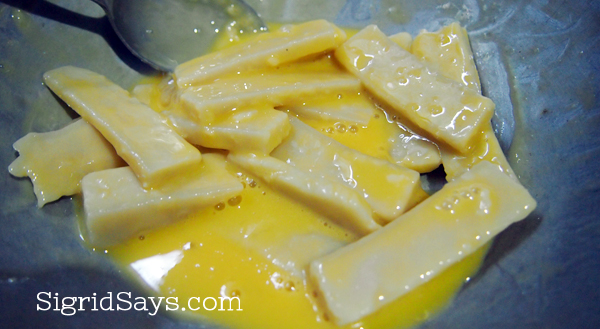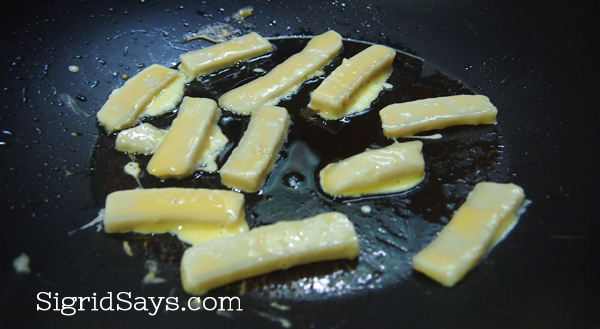Why do Chinese eat Tikoy on Chinese New Year?
Tikoy is so popular during Chinese New Year. Ever wondered why? And how do the Chinese eat it? Here’s how.

Why Eat Tikoy
The eating of tikoy has been associated with the celebration of Chinese New Year, thanks to the rich cultural influences of the Chinese settlers in the Philippines. Personally, on my mother’s side, I think my grandmother is half Chinese but we never really practiced or spoken Chinese at home.
But then I got married into a Chinese family. Yup, contrary to what others might think, my hubby is not Korean but of Chinese descent, but born and raised here in Bacolod City.
Anyway, ever since I stayed with my husband’s family, the eating of tikoy has been part of our Chinese New Year celebration every year, and even a few weeks or months after that. Yeah, we just freeze the tikoy leftovers and cook them after some time when we feel like it. My mother-in-law specifically likes it.
But why do we eat tikoy? What is the significance of this food in welcoming the Chinese New Year?
The Origins of the Tikoy
According to the online resource, wikipedia, here is an excerpt about the tikoy. The history is quite interesting but is connected to a lot of superstition.
“Niangao (nin gou in Cantonese), sometimes translated as year cake or Chinese New Year’s cake, is a food prepared from glutinous rice and consumed in Chinese cuisine. While it can be eaten all year round, traditionally it is most popular during Chinese New Year. It is also traditionally eaten during the Duanwu Festival.
“It is considered good luck to eat nian gao during this time, because “nian gao” is a homonym for “higher year.” The Chinese word 粘 (nián), meaning “sticky”, is identical in sound to 年, meaning “year”, and the word 糕 (gāo), meaning “cake” is identical in sound to 高, meaning “high or tall”.
“As such, eating nian gao has the symbolism of raising oneself taller in each coming year (年年高升 niánnián gāoshēng). It is also known as a rice cake. This sticky sweet snack was believed to be an offering to the Kitchen God, with the aim that his mouth will be stuck with the sticky cake, so that he can’t badmouth the human family in front of the Jade Emperor.”
Others believe that its stickiness will make your success and prosperity “stick”, or that it represents the family and friends “Sticking” together throughout the year.
Different Kinds

In our family, because my parents-in-law are Christians, I think they just like eating tikoy without any superstitious significance. For them it is just another Chinese snack.
And also, Mama’s sister has a food factory that produces tikoy, so almost always, we get our stash from them every year. These are aside from of course, the gifts we receive from friends and church mates.

How to Eat Tikoy
So, on Chinese New Year, we are eating tikoy, coated with beaten egg and fried lightly in little oil. Of course, there are many things you can do with it. You may also wrap the tikoy slices in lumpia wrapper and fry it. It will come out crispy on the outside and have a sticky feel on the inside.
But we do it the simplest. I have really no idea if you can eat it as is without cooking it. If you come to think of it, I never asked my mother in law. I just ate whatever the cook served us. haha

Xin nian kuai le!
Happy Chinese New Year everyone!
